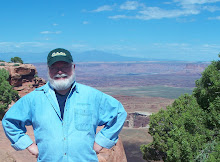Below is the Ryan Budget Plan stated without any hyperbole, emotive adjectives or spin:
The latest (March, 2012) full-scale version of the plan, vows to cut spending by $5 trillion over the next decade.
Persons currently 55 or older would not be effected by the Ryan Plan. The plan would, a decade from now, give seniors the option of taking a government payment to purchase health insurance. That payment could be used to buy a private insurance plan, or go toward the traditional Medicare plan. The plan calls for extra assistance to help low-income beneficiaries and those with "greater health risks."
The plan would overhaul Medicaid by turning it into a block grant system for states.
The plan would cut the corporate tax rate from 35 percent to 25 percent. It would implement two individual income tax brackets -- 10 percent and 25 percent – and lock in the Bush tax cuts
The plan would head off the scheduled automatic defense cuts, first by diverting the planned $55 million defense cut in 2013 by implementing those cuts elsewhere.
The plan would head off the scheduled automatic cuts to Social Security in 2013.
This post was developed by reading the ABC News version of the Ryan Plan, the Fox News version, the Wall Street Journal version and the Washington Post version.
